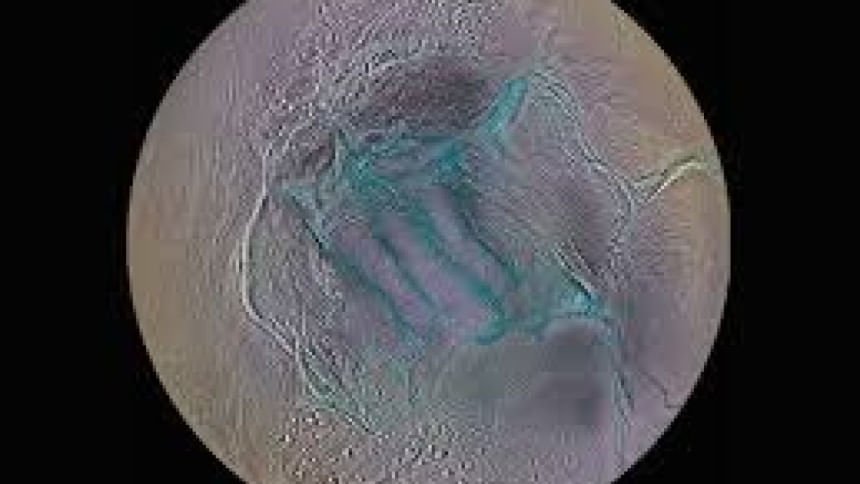A recent study revealed that the ocean beneath the frozen surface of Saturn’s moon Enceladus contains intricate organic compounds, providing more support to the notion that this distant world may have the necessary components to sustain alien life. Enceladus, a small moon measuring 500 kilometers (310 miles) in diameter and not visible to the naked eye, is characterized by its white appearance and scarred surface, orbiting around the sixth planet from the Sun amid a multitude of moons.
Initially believed to be too cold and distant from the Sun to support life, Enceladus drew renewed interest when the Cassini space probe conducted multiple flybys of the moon between 2004 and 2017 during its mission to Saturn and its rings. During these encounters, Cassini uncovered indications of a vast saltwater ocean hidden beneath the moon’s thick icy crust. Subsequent analysis of the data collected by Cassini demonstrated that the ocean contains essential elements such as salt, methane, carbon dioxide, and phosphorus that are conducive to hosting life.
Previous examinations of the data had already identified various organic molecules, including amino acid precursors, critical for life’s formation. However, concerns were raised that these organic compounds might have undergone alterations over time due to exposure to cosmic radiation or confinement within the moon’s environment. To address these uncertainties, scientists sought to study fresh ice grains to gain more insights into the composition of Enceladus.
Fortunately, an opportunity arose in 2008 when Cassini flew directly through the plume of icy particles emanating from the moon’s surface, allowing ice grains to impact the spacecraft’s Cosmic Dust Analyzer at high speeds of around 18 kilometers per second. Despite this fortunate event, it took several years to conduct a comprehensive chemical analysis of these particles, culminating in the publication of a study in the journal Nature Astronomy focusing on these findings.

